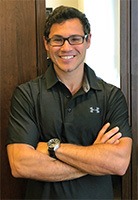
Article at a Glance
Obstructive sleep apnea (OSA) occurs when the airflow is insufficient for metabolic demands. The collapse of the pharynx results in this obstruction: when muscle dilator activity becomes insufficient to maintain the pharynx, obstruction occurs.
OSA is an epidemic largely affecting obese individuals. While prevalence in the U.S. is estimated at 2% to 24% of the population, it is likely closer to the upper margin of this range because many patients are undiagnosed. In specific, OSA is moderately associated with a body mass index (BMI) of greater than 35, as well as hypertension and an increase in age up to 65 years. It also occurs more often in men than women, at a ratio of 2-3:1.[1]
Obstructive sleep apnea symptoms can include:
While not everyone who snores has OSA, it is still recommended for snorers and individuals experiencing other symptoms to seek professional input from a physician.
To form a diagnosis, physicians will recommend patients to undergo full-night polysomnography, either in-lab or at home with a portable monitor. The test will measure critical parameters such as heart rate, leg movements, breathing patterns, and oxygen saturation. The number of respiratory events, including apnea (the repeated stopping and starting of breath), will be recorded to form the patient’s Apnea/Hypoapnea Index (AHI) score. Diagnoses are made at the following rates of interrupted breathing:
Depending on the findings, the physician may recommend treatments such as changing the sleeping position or the implementation of oral appliances. These appliances include mandibular reposition appliances which hold the jaw in place, as well as tongue retaining devices, which hold the tongue in a forward position to optimize airflow. In certain individuals, surgery may also be recommended to resolve sleep apnea. Removal of the tonsils and/or adenoids, for instance, may facilitate an improved airflow. While pharmacology is not typically a primary treatment option, limited corticosteroid use may improve airflow in patients with concurrent rhinitis.
One viable treatment option for all levels of OSA is positive airway pressure (PAP) therapy. Machines consisting of a mask to cover the nose and mouth, as well as a tube connecting to a motor which blows air into the tube, can help to ensure ample levels of air are reaching individuals while they sleep. Yet, compliance with PAP is poor, with 46% to 83% of patients being noncompliant.[2] Thus, where applicable, alternate therapies should be considered. In individuals with a BMI greater than 25, weight loss is one behavioral therapy that should be explored.
Register for your complimentary phone consultation.
We hope the information above assisted you in your research process
This guide was produced with contributions from the following key resources:
The Textbook of Age Management Medicine Volume 1: Mastering Healthy Aging Nutrition, Exercise and Hormone Replacement Therapy
Textbook Authors:
Jeffrey Park Leake, M.D., CPT
Dr. Jeffrey Park Leake is a Partner and Director of Education at Cenegenics Elite Health specializing in age management and wellness. Having trained hundreds of physicians worldwide, Dr. Leake is also the Director of Education for the Clinical Strategies for Healthy Aging course at AMM Education Foundation.
Todd David Greenberg, M.D., CSCS
Dr. Todd Greenberg is a practicing physician with a broad range of expertise, including wellness, exercise, sports injuries, and MRI of sports injuries. He is a Radiology Clinical Associate Professor at the University of Washington.
Why Can’t I Sleep? – Clinical Explanations
What is Age Management Medicine?
Watch Now: 3 Tips for Better Sleep
[1] Young et al. “The Occurrence of Sleep-Disordered Breathing among Middle-Aged Adults.” The New England Journal of Medicine. 1993. Retrieved from URL: https://www.nejm.org/doi/full/10.1056/nejm199304293281704.
[2] Weaver, T.E., and Grunstein, R.R. “Adherence to continuous positive airway pressure therapy: the challenge to effective treatment.” Proceedings of the American Thoracic Society. 15 Feb. 2008. Retrieved from URL: https://www.ncbi.nlm.nih.gov/pubmed/18250209.
 Contributor: Joshua D'Alessandro - MS, CSCS, CISSN Health Coach at Cenegenics New York City
Contributor: Joshua D'Alessandro - MS, CSCS, CISSN Health Coach at Cenegenics New York City
My name is Joshua D'Alessandro and I am a Health Coach for Cenegenics in NY. My passion for fitness began at a very young age and has manifested into a career filled with possibilities. The countries largest epidemic, and quite possibly the root cause of most issues, is diminishing health. In my career, I hope to do everything and anything I can to improve the well being and lives of the people around me!


